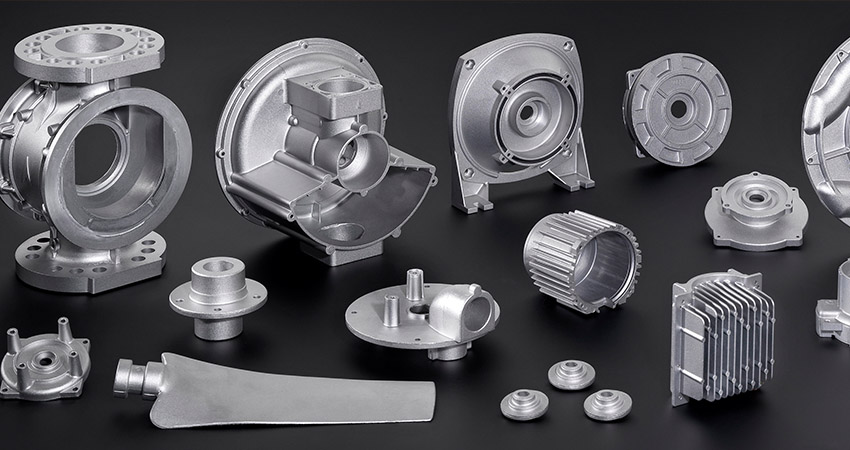The Only Guide to Aluminum Castings Company
Table of ContentsWhat Does Aluminum Castings Company Mean?3 Simple Techniques For Aluminum Castings CompanyThe Best Guide To Aluminum Castings CompanyTop Guidelines Of Aluminum Castings CompanyThe smart Trick of Aluminum Castings Company That Nobody is Talking AboutThe Single Strategy To Use For Aluminum Castings CompanyTop Guidelines Of Aluminum Castings CompanyWhat Does Aluminum Castings Company Mean?
There are 2 main types of die casting made use of in the aluminum casting market: hot chamber die spreading and cool chamber die casting. The key difference between these methods is just how the molten steel is provided to the mold. In hot chamber pass away spreading, generally made use of for lower melting factor steels, the melting pot is directly linked to the machine, and a bettor forces the material with a gooseneck right into the die dental caries.
The Only Guide to Aluminum Castings Company
In these techniques, the mold is intentionally damaged or broken away in order to extract the completed light weight aluminum spreading. Typical processes under the classification of expendable mold spreading consist of (investment casting),,, and financial investment casting. When manufacturing custom-made light weight aluminum parts making use of expendable mold and mildews, makers put liquified light weight aluminum or light weight aluminum alloys right into the mold and mildew, which is after that broken apart to launch the strengthened steel component.
The is one of the oldest and most extensively secondhand forms of aluminum casting. It entails compacting specialized factory sand, commonly strengthened with clay or resin, around a specifically crafted reusable pattern that identifies the form and inner details of the finished aluminum product. The pattern system includes risers and vents to handle the flow of molten steel and to stop casting defects such as contraction porosity.
What Does Aluminum Castings Company Mean?

This mold and mildew is then preheated prior to the pouring of molten aluminum or light weight aluminum alloy. As the steel fills the covering, it catches the intricate details and fine surface finish of the mold and mildew. Once cooled, the ceramic is mechanically or chemically escaped, allowing for the removal and separation of individual actors parts.
Rumored Buzz on Aluminum Castings Company
Permanent mold casting makes use of reusable steel mold and mildews and is excellent for automation with constant quality and less waste. Expendable mold and mildew casting uses single-use molds, like sand or foam, providing style versatility and lower tooling costs for models or short runs. Pass away spreading is best for generating high quantities of aluminum components that call for tight resistances, fine information, and smooth surfaces.
The Toshiba Device DC-J Series consists of die casting makers ideal for light weight aluminum. Recognized for their robust building and construction and high shot efficiency, these makers make sure reliable and precise spreading (Aluminum Foundry).

While light weight aluminum can be used in its pure kind, it is frequently alloyed with other steels to enhance its homes or the residential or commercial properties of the various other metals. Aluminum alloys are categorized right into 8 series, phoned number from one to 8.
Our Aluminum Castings Company Diaries
This alloying enhances the stamina and solidity of aluminum yet decreases its ductility and deterioration resistance. The 2000 collection alloys are challenging to weld but can be warmth dealt with to improve their residential properties. The 3000 series alloys are largely alloyed with manganese. This combination improves rust resistance while giving moderate stamina.
The 4000 collection alloys are alloyed with silicon, which lowers the melting factor and improves fluidness. This makes it a preferred selection for casting, as it is continue reading this very easy to create in its liquified state.
Aluminum Castings Company Fundamentals Explained
This series is categorized as a high-strength alloy, specifically fit for sheet and plate applications because of its exceptional weldability. Its resistance to rust from acids and antacid makes it excellent for usage in harsh and hostile environments (Core Making). The 6000 collection alloys are alloyed with both magnesium and silicon, giving a balance of stamina, mechanical residential properties, and rust resistance
Processing the 6000 series needs specialized and advanced tools, which can be complicated and costly. This series is understood for its exceptional deterioration and oxidation resistance, as well as its simplicity of coating, treatment, and workability. The 7000 collection light weight aluminum alloys are the strongest and most resilient amongst aluminum types, with toughness comparable to about two-thirds of industrial-grade A3 steel.
About Aluminum Castings Company
Zinc is the primary alloying aspect in the 7000 series, improving the solidity of the light weight aluminum, even though zinc's solidity resembles that of aluminum on the Mohs scale. The 8000 series aluminum alloys are mostly alloyed with tin, along with percentages of copper and nickel (Sand Molding). While these alloys provide lower stamina compared to various other series, they master machinability and put on resistance
Light weight aluminum cast heatsinks are electrically conductive, allowing them to be grounded effectively. They are typically cast with integrated functions that decrease the need for secondary procedures, such as added machining or assembly, resulting in additional expense savings. Aluminum spreading is often utilized to manufacture braces for both heavy-duty industrial devices and house devices.
Top Guidelines Of Aluminum Castings Company
The single-piece construction of aluminum braces enhances their toughness and toughness, lowering the probability of failing. If holes are required, they can be consisted of directly in the casting mold and mildew, reducing the requirement for post-production finishing (https://www.startus.cc/company/aluminum-castings-company). Makers have significantly embraced aluminum spreading for golf equipment as a result of its sturdiness, security, and flexibility in shaping